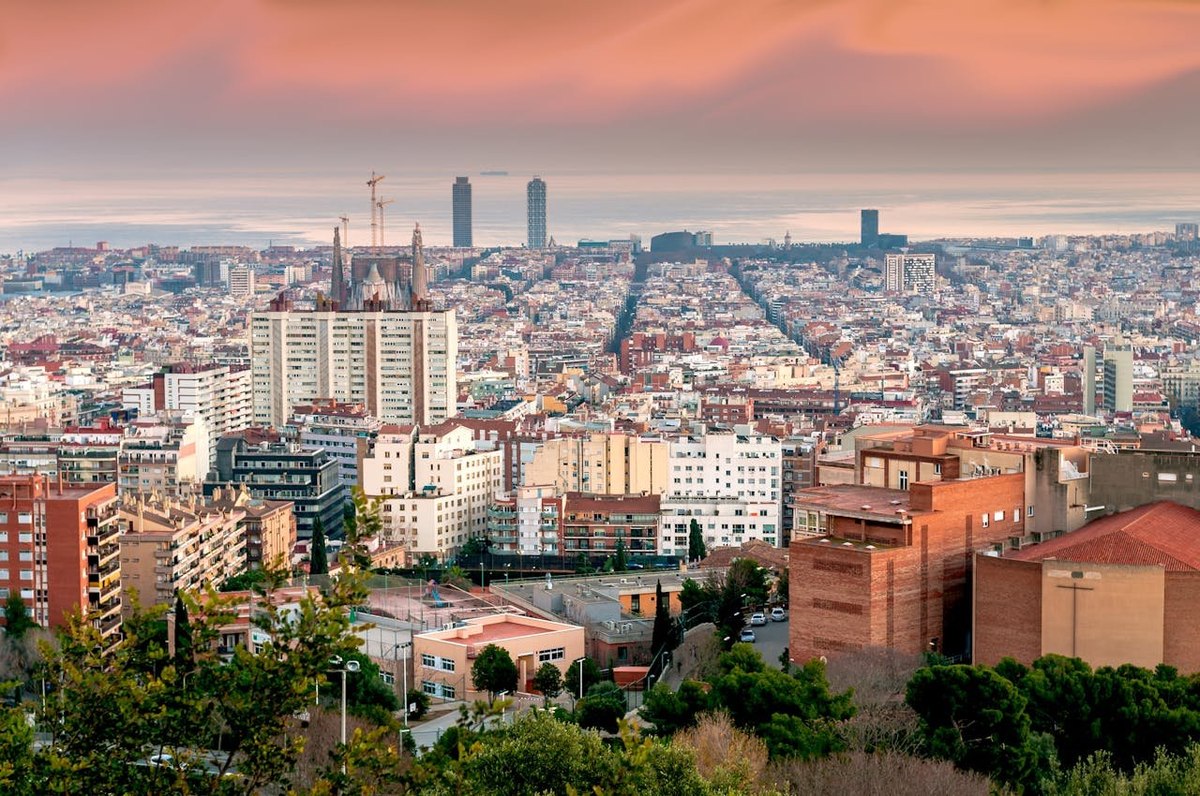Key findings:
- Anti-tourism protests in Barcelona and Mexico made headlines, but only a small impact
- Negative Buzz was relatively small and short-lived, with sentiment normalizing within weeks
- Travel Consideration held steady (or even increased), showing protests did not deter would-be travelers
Many countries in Europe have long been some of the most sought after tourist destinations for people all over the world, including the United States.
But the droves of tourists aren’t always welcome with open arms – sometimes they are even met with squirts from water pistols wielded by protestors. Concerns over what some perceive to be unsustainable numbers of tourists haven’t been limited to just Europe’s borders either. Mexico witnessed headline-making anti-tourism protests in early July this year.
Making headlines in one thing, but deterring tourists is a whole different matter. To investigate whether news about these protests make an impact on US travelers, we see how (if at all) America’s passionate travelers reacted in the aftermath of two of the most widely reported anti-tourism protests in the last two years.
Last year’s news about the viral protests in Barcelona, which included protestors spraying tourists with the aforementioned water pistols, didn’t seem to get noticed by too large a share of passionate travelers. Passionate travelers here simply refer to US adults who agree with the statement “I am passionate about traveling”. Attention scores, which measures the share of an audience who has heard anything positive or negative about a destination in the past two weeks, showed modest movement for Barcelona and only slightly more pronounced movement for Spain. Scores for Barcelona rose from 16.9% on the day the news broke to a high of 19.6% - which is within the margin of error. For Spain, scores moved from 17.8% to a high of 22.3%.
Deeper analysis of Attention scores suggest that the uptick may have indeed had to do with negatively perceived headlines about the protest. The percentpercentage of passionate travelers who said they heard something NEGATIVE about Barcelona rose from 0.5% to a high of 5.1% about four weeks later. For Spain, negative Buzz peaked at 4.7% from a base of 1.4%. But this negative Buzz had already started normalizing by the end of August.
Impression scores for Barcelona dipped slightly too – from 40.8 to a low of 35.5 within a month of the news.
But should these dips be a cause of worry for tourism bodies in Spain (or elation for the protestors)? Perhaps not. Consideration scores for both Barcelona and Spain seemed to have remained unaffected. For Barcelona, the Consideration score of 18.5% on July 8 briefly touched a low of 15.9%, but bounced back to 19.1% by the end of August. Spain’s Consideration scores actually rose from 19.9% to 28.5% at the end of August – suggesting at the very least that news about protests didn’t have an impact at all, or may have even piqued traveler interest.
In Mexico, one particularly prominent protest occurred on July 4 this year and started getting reported by American media outlets soon after. Analysis of Attention scores shows no appreciable movements beyond the usual ebb and flow.
Neither does negative Buzz register a big movement in the immediate aftermath of the protest. In fact, positive Buzz gained from 11.9% on July 5 to a peak of 17.4% on August 19. While it is possible that news about the protests was being received positively, it is equally likely that the uptick was due to other triggers or due to routine cyclical moves. Still, it can be said with reasonable amount of certainty that news about the protests didn’t seem to spark negative attention at least.
Consideration scores also trended slightly upwards in the immediate aftermath of the protests, rising from 17.1% to a peak of 21.9% at the end of August.
While it is curious that Consideration scores inched upward in the aftermath of both protests observed in this article, it should be noted that these could be just coincidences. What is more noteworthy is the absence of a sharp downward dip in any of the metrics, which suggests that even relatively widely-reported anti-tourism protests do not necessarily get noticed by US travelers at large. And neither do these seem to impact travel intent, at least in the short term.
Methodology: YouGov BrandIndex collects data on thousands of brands and destinations every day. Attention scores for destinations are based on the percentage of people who say they have heard anything positive or negative about the destination in the past two weeks. Scores are reported as percentages, based on daily surveys of US adults who agree with the statement “I am passionate about traveling”. Data is weighted using a propensity scoring methodology with targets from the American Community Survey (ACS) to ensure representation by age, gender, race, education, and region. Figures are shown as a 4-week moving average. For Spain and Barcelona, the sample sizes range from 478 to 675 passionate travelers between June 1, 2024 and August 30, 2024.
A destination’s Consideration score is based on the question: Thinking about your next vacation by air alone or with friends, family, a partner or spouse, which of the following destinations would you consider? Scores are reported as percentages, based on daily surveys of US adults who agree with the statement “I am passionate about traveling”. Data is weighted using a propensity scoring methodology with targets from the American Community Survey (ACS) to ensure representation by age, gender, race, education, and region. Figures are shown as a 4-week moving average. For Mexico, sample size ranging from 306 to 416 between June 1, 2025 to September 30, 2025.
Image Credit: Antonio Lorenzana Bermejo via Pexels
